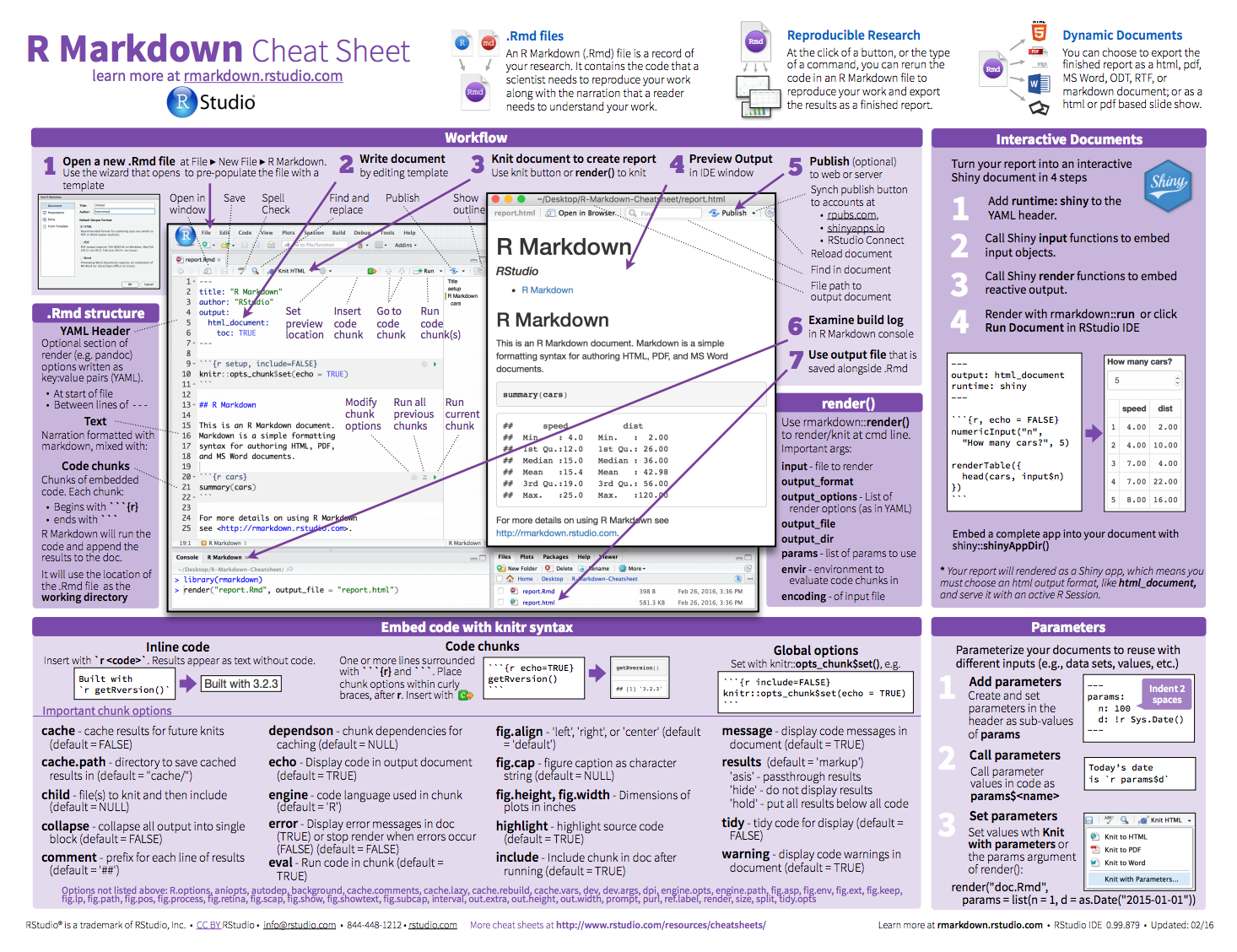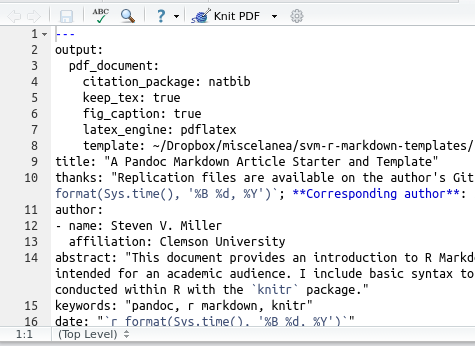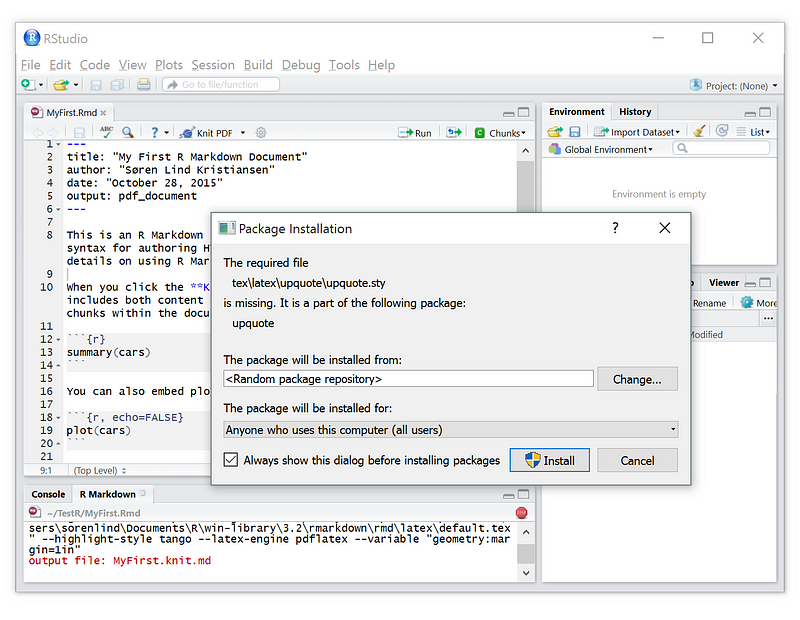


You can write math inline by placing it between $ symbols. You’ll need to install LaTeX, and the best way to do that is to install the tinytex package (this is an easier and much smaller installation than the full LaTeX installation which is about 5 Gigabytes!!!). If you have to put math in R Markdown you can use LaTeX math notation. Then, to write and execute Python code you just need to wrap it as follows: ``` 9. Sys.setenv(RETICULATE_PYTHON = "path_to_env/bin/python3") Rprofile file which will run every time you launch your project. One way to do this is to set the RETICULATE_PYTHON environment variable to the path to the python executable in the conda environment or virtualenv that you want to work. To run Python code inside R Markdown, you need to have the reticulate package installed make sure that your session is pointing to a Python environment that has all of the packages you need. In particular you can run Python code and even use Python outputs in later R code. It accepts and runs a wide range of languages. You don’t have to embed R code in R Markdown. Awesome! More instructions here.īeautiful, clean xaringan slide layout (Image by author) 3. However, if you knit with parameters by selecting this option in RStudio’s Knit dropdown (or by using knit_with_parameters()), a lovely menu option appears for you to select your parameters before you knit the document. If you knit your document as normal, it will knit with the default values of these parameters as per the value variable.

Now you can write these variables into the R code in your document as params$animal_name and params$years_of_study. For example: - title: "Animal Analysis" author: "Keith McNulty" date: "18 December 2020" output: html_document: code_folding: "hide" params: animal_name: value: Dog choices: - Dog - Cat - Rabbit years_of_study: input: slider min: 2000 max: 2019 step: 1 round: 1 sep: '' value:. You can do this by defining parameters in the YAML header of your R Markdown document, and giving each parameter a value. You can automate a similar report about cats in just one command if you parameterize your R markdown document.

And then you get told - ‘nah, I’m more interested in cats’. So you write a lovely R Markdown document where you’ve analyzed a whole bunch of facts about dogs. If you have worked in it before, here are ten little tricks I’ve learned which have served me well in numerous projects, and which highlight how flexible it is. If you have never worked in R Markdown, I highly recommend it. It is incredibly flexible, has many beautiful design options and supports many output formats really nicely. Though I code in both R and Python, R Markdown is my only route for writing reports, blogs or books. Note that the echo = FALSE parameter was added to the code chunk to prevent printing of the R code that generated the plot.R Markdown is more versatile than you might think You can embed an R code chunk like this: summary(cars) # speed dist When you click the Knit button in RStudio, a document will be generated that includes both content as well as the output of any embedded R code chunks within the document. For more details on using R Markdown see. Markdown is a simple formatting syntax for authoring HTML, PDF, and MS Word documents. By studying the document source code file, compiling it, and observing the result, side-by-side with the source, you’ll learn a lot about the R Markdown and LaTeX mathematical typesetting language, and you’ll be able to produce nice-looking documents with R input and output neatly formatted.


 0 kommentar(er)
0 kommentar(er)
